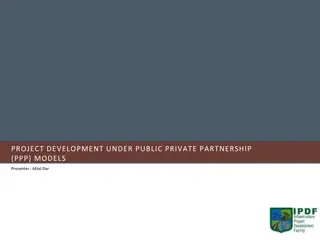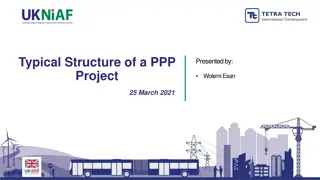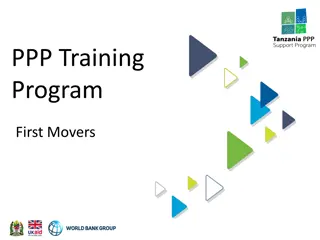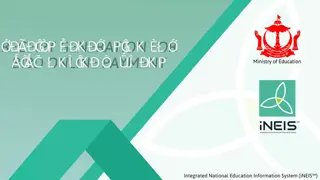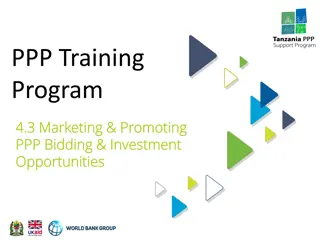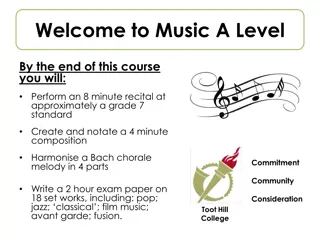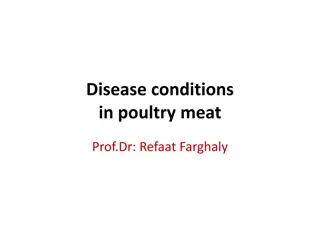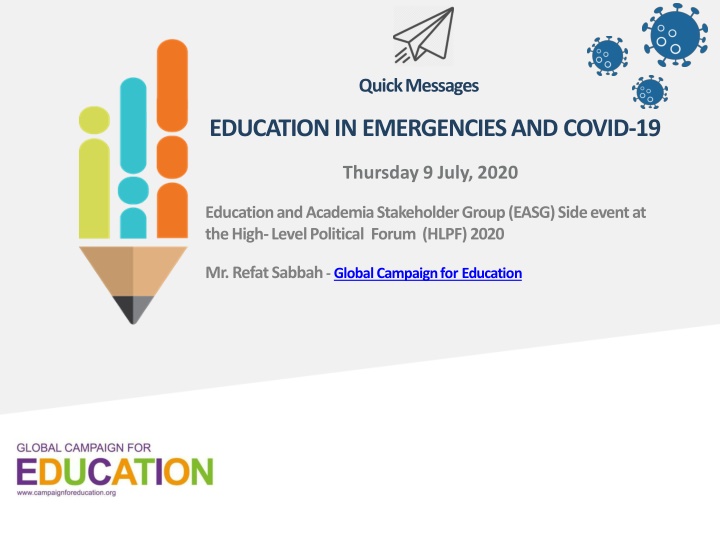
Education in Emergencies and COVID-19: Prioritizing Children's Right to Learning
Millions of children and youth face educational disruptions due to crises and the COVID-19 pandemic. Prioritizing and funding education in crisis situations, ensuring a safe return to school, and providing support to teachers, parents, and caregivers are crucial. Stakeholders must address the additional risks faced by vulnerable groups such as refugees, girls, and children with disabilities. Governments and donors need to invest in quality education to protect children's rights and well-being during and after emergencies.
Download Presentation

Please find below an Image/Link to download the presentation.
The content on the website is provided AS IS for your information and personal use only. It may not be sold, licensed, or shared on other websites without obtaining consent from the author. If you encounter any issues during the download, it is possible that the publisher has removed the file from their server.
You are allowed to download the files provided on this website for personal or commercial use, subject to the condition that they are used lawfully. All files are the property of their respective owners.
The content on the website is provided AS IS for your information and personal use only. It may not be sold, licensed, or shared on other websites without obtaining consent from the author.
E N D
Presentation Transcript
Quick Messages EDUCATION IN EMERGENCIES ANDCOVID-19 Thursday 9 July, 2020 Education and Academia Stakeholder Group (EASG) Side event at the High-Level Political Forum (HLPF)2020 Mr. Refat Sabbah -Global Campaign for Education
WELCOMEALL Contents - Background Children and youth in crisis should not be left further behind - Prioritize and fund education in crisis - Protect children and youth, and ensure a holistic approach to well-being - Plan for a safe return to school - Teachers, parents, and caregivers need targeted support - Refugee, returning, migrant and IDP children and youth face additional risks - Girls and young women face additional barriers and risks - Children and youth with disabilities need inclusive education responses - Early childhood interventions matter - Questions
Background: Children and youth in crisis should not be left furtherbehind Every year, millions of children and youth miss out on their right to education. In 2019, 258 million children had never set foot in a classroom, largely as a result of discrimination based on gender, disability, poverty, and the impact of conflict and crisis, including forced displacementand migration. The COVID-19 pandemic has exponentially increased the numbers of studentsout of school,with nearly91%of the world s students more than 1.57 billion affected by school closures in 194 countries. As children and young people around the world face disruption to their education because of COVID-19, it is essential to ensure that their learning and well-being remain a priority. Prioritizing safe, quality opportunities for all those affected by Pre-COVID-19 crises remainsat the forefront of GCE swork,especiallyaschildrenandyouth in such contexts are disproportionatelyaffectedby the pandemic. learning The rights of children and youth are not suspended during an emergency. This includes the right to education. Quality education protects cognitive development and supports psychosocial well-being. In times of crisis,it offerschildren a sense ofhope.
1. Prioritize and fund education in crisis Key Messages Policy, planning, and financing for the COVID-19 response must include quality education in all local and national response and recovery plans during and after the COVID-19 crisis. Learning opportunities during school closures should not further exacerbate educational inequalities on the basis of gender, poverty, disability, ethnicity, religion, geographic location, refugeestatus, and more. Refugee, migrant, and internally displaced children and youth should be included within national and sub-national education COVID-19 response and recovery plans. All stakeholders should ensure a gender-sensitive education response to COVID-19. Girls and young women in conflict and crisis contexts already face greater barriers in accessing quality education. Governments should maintain or increase investment in education to at least 10-20% of their national budget, prioritizing investment to ensure the most marginalized children and youth have access to quality education during and after the crisis. Donors should maintain existing commitments and increase allocations to Education Cannot Wait s (ECW) response to COVID-19 as well as to the Global Partnership for Education. Guidance and tools for teachers and education providers should prioritize the use of accredited, quality child- and youth-friendlyemergency remote teaching opportunities. COVID-19 education responses must be properly coordinated with various sectors, such as health, WASH, and child protection. COVID-19 response policies, programs, and funding should support families and caregiversto promotechildren slearningandwell-being in thehome.
2. Protect children and youth, and ensure a holistic approach towell-being Key Messages Safe,qualityeducation includingemergencyremote teaching can offer lifesaving and protective measures during times of crisis, including the COVID- 19 pandemic. Ensure all children, youth, parents, and caregivers have accurate information to support child-safeguarding, and that the information is delivered in ways that limit panic and distress, reassures, and encourages adherence to health messaging. Integrate mental health and psychosocial support into all efforts to support childrenandyouthduringschool closuresand duringtheirreturnto schooling. Include child protection considerations in the development and roll-out of learning tools, with particular attention to the most vulnerable children and youth. Where schools remain open, measures must be in place to protect children and youth, not only from the health impact of COVID-19 but from the additional risks to theirwelfare. Provide additionalfinancialsupportfor teachers,parents,and caregivers. Maintain child nutrition levels where nutrition has previously been delivered throughschools by providingalternatives to school feeding programs. Continue to protecting learning spaces. Learning spaces, teachers and students may still be subjected to attack, regardless of the COVID-19 pandemic. Governments should sign up to the Safe Schools Declaration and ensure that schools are notutilizedas healthor shelter facilities.
3. Plan for a safe return to school Key Messages Government health authorities should decide when schools reopen. All educational authorities should adhere to the Guidance for COVID-19 Prevention and Control in Schools. Teachers and principals should be engaged in the decision- making process and in the planning for the return to school. Strengthen education systems. There is an opportunity to build back better after the pandemic and to address past weaknesses. Plan for, provide, and fund additional catch-up classes or accelerated education programmes. Maintain and increase financing to support a safe and smooth transition back to school.
4. Teachers, parents, and caregivers need targetedsupport KeyMessages Include teachers in developing COVID-19 education and aid responses -Ensure that teachers play a meaningful role in making decisions and choosing the alternative distance teaching interventionsthat affectthem in relation to the COVID-19 response. Preserve employment and wages for teachers and school personnel -National governments should ensure that teachers continue to be paid despite school closures. This should be supported by donors who need to provide sufficient multi-year funding during school closures and after schools reopen. Prioritiesthe health,safety,andwell-beingofteachers,learners,families,and caregivers -Providetargetedsupportresourcesto promoteteachers andfamilies /caregivers well-being, as they themselves are affected by the crisis. When teachers and families/caregivers are well, they are better able to create safe, nurturing, supportiveenvironmentsthat supportthe cognitive,social, and emotionaldevelopment oflearners. Provideadequateprofessionalsupportandtraining -Train teachers and other staff on signs of distress, so they can identify and refer children who may have specific child protectionneeds or are facingother threats to their physicaland mental health as a result of COVID-19. -Strengthen and improve the quality and coordination of online teacher professional development opportunities where necessary. -Train teachers to develop lessons and materials to support students' social-emotional learning, and provide resourcesto parents and caregivers.
5. Refugee, returning, migrant and IDP children and youth face additional risks KeyMessages Includingrefugees,asylumseekers,and IDPs in COVID-19 responses -Refugees, migrants, asylum seekers, and IDPs should be included in all government-led COVID-19 responses to ensure the continuity of education. These should recognize that refugee, migrant and host communities may have limited access to resourcesand connectivity. Prioritize funding for education for refugee, migrant, and IDP children and youth to avoid catastrophichardship -Donors, governments, and the international community must prioritize investment and responses for refugee, migrant and IDP children, including for education. Outbreaks of COVID-19 in humanitarian settings could be catastrophic. -Additional funding should be provided to strengthen social distancing measures and improve WASH facilities particularly those living in congestedenvironments. for refugees/migrants/IDPs - Alignremotelearningprogrammeswith relevantcurricula -Education programmes should align with relevant curricula and methods to the greatest degree possible. In the longer term, this will facilitate a recognizable pathway towards certification that is equivalent to ministry of education requirements.
6. Girls and young women face additional barriers andrisks Key Messages Include girls and young women in decisionmaking for the COVID-19 response -Women and girls should be included in decision making for COVID-19 preparedness and response, and be guaranteed representation in nationalandlocal COVID-19policy spaces. Take specific action to ensure that girls and young women have continuous access to quality education and learning when schools are closed. -Governments should work closely with teachers, school staff, and communities at large to ensure distance learning curricula, activities, and resources are gender sensitive and inclusive. Community sensitization on the importance of girls education should continue as part of any distancelearning programme. - In contexts wheredigitalsolutionsare less accessible, adoptdistancelearning approachesthatare low-tech and gender-responsive. -On average, access to mobile internet is 26% lower for girls and women compared to boys and men globally (OECD, 2018, UN Women 2019). Mitigatethe risk of sexual exploitationand gender-basedviolencewhen schools close -Girls who are out of school face higher risks of sexual and gender-based violence (SGBV), early marriage, and pregnancy. Ensure all actors involvedin the deliveryof emergencydistance education. - Considering innovative ways to address the needs of girls who miss out on vital services when schools are closed, specifically school meals and protection. This means making available school access points for individual psychosocial support and food distribution, working cross-sectorallyto ensurealternativesocial services are in place, or delivering supportover the phone,text,or throughother forms of media. -Train teachers on how to include access to clear information on safe and gender-responsive referral practices within their teaching and learning materials. Take measures to ensure girls return to school post-crisis -Ensure flexible learning approaches and allow automatic promotion and appropriate opportunities in future admissions processes that recognize the particular challenges for girls. - Previous epidemics have demonstrated that girls face greater barriers than boys in returning to school post-crisis.
7. Children and youth with disabilities need inclusive education responses KeyMessages Involve children and youth with disabilities and other relevant stakeholders in COVID- 19 responses -Involve children and young people with disabilities and their caregivers in decisions affectingtheir education provisionand needs. -During educational needs assessments for the COVID-19 response, make efforts to liaise with representative organizations and groups (such asdisabledpeople s organizations) to build a comprehensive picture of who is excluded and what is needed to include them. Governments and donors must fund and deliver quality distance education for children and youth with disabilities, from pre-primary through all levels of education. - Appropriate distance teaching and learning opportunities should be available children and youth with disabilities. Modes of delivery and resources should be adapted to be accessible to children with a range of disabilities. for Implementandfundprotectiveplansandpolicies -In emergency contexts, including the COVID-19 crisis, children and youth with disabilities may face increased risk of physical and sexual violence. Governments together with other stakeholdersshouldidentify any increased risk and ensurethat protectivepoliciesand plans at local and national level levels are implementedand funded.
8. Early childhood interventionsmatter KeyMessages Include parents and caregivers in the design of the COVID-19response - Parents and caregivers should be involved from the outset of response and recovery plans to ensure that age-appropriate messages are used consistently to strengthen the resilience of children, their parents and caregivers. Provideaccurateinformationand advice forparentsand caregiverson COVID-19 -Encourage and equip parents and caregivers to use simple, effective, and age-appropriate psychosocial support and social emotional learning activities that support children s wellbeing and coping skills development. -Develop or enhance social protection mechanisms that address the needs of families with young children. Direct resources to, and design programs for, ECD interventions that include play and responsive care giving -Provide age appropriate ECD play-based interventions that promote children s learning, development and well-being. -Includeparents and caregivers in the designof the responseand recoveryefforts. Fund ECD interventionsduring and after the crisis -Include funding for early childhood development and childcare services in all national COVID-19 responses. -Once schools are safely re-opened governments and donors should increase their allocations to ECD to follow the Education Commission scall for full public financing for two years of pre-primary education in all countries. -All humanitarian response plans should include targets holistically addressing the needs of children ages 0-5, and donors funding humanitarian crises should prioritize pre-primary education and early cognitive supportas partof their initialemergencyinvestmentsand long-term strategies.
Questions Thank you very much for your kind attention



